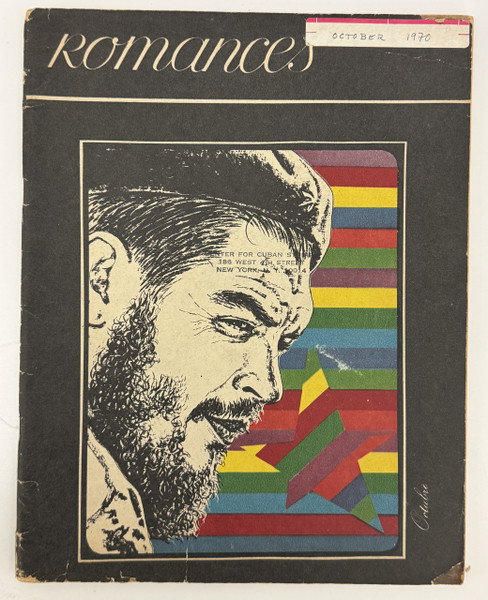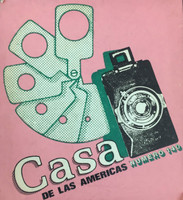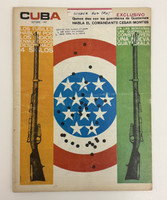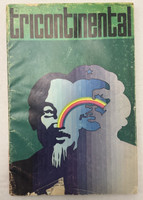- Travel
-
Exhibits
- Covers
- Immortal Cuba: Artists Take on Their Heroes
- Seattle Poster Exhibit
- Sandra Dooley & Alejandrina Cué
- The Art of Wayacón
- Cuban Folk Art
- Cuba In Black And White
- 25 Years of Cuban Art Space
- Summer Folk Art Expo
- ¡SPRING AWAKENING FROM CUBA!
- Celebrating The Art Of Cuban Women
- Celebrating Paper, Affordable Art from Cuba
- Art of the Revolution
- Outsider Art
- Lost and Found
- En la lucha: Celebrating Cuban Women and Their Art
- Cuban Art Stash
- 100 Fires: 5 Cienfuegos Artists' Work on Paper
- Waya + Monte! Magic Realism in Cienfuegos
- Viva Cuba Viva! Poster Show
- Cultivando Sueños
- Black Lives Matter in Cuba Jan 9-March 27
- Leandro Soto: Crónicas visuales
- Cuban Canvas
-
Archive
- Global Reflection 2018: Spirit and Community
- Exhibit in the cloud: Contemporary Works on Paper
- MADE IN CUBA! MINNEAPOLIS EXHIBIT
- Cuban Posters and Photography from CCS collection
- AUTUMN SALE! Sept/Oct 2017
- SPRING ARTS AND CRAFT SALE
- Vuelo Directo/Non Stop: Alberto & Alejandro Lescay
- The Many Faces of Fidel
- Somos
- Made in Cuba!
- The US empire in Cuban graphics
- Made in Cuba/Seattle exhibit
- Entre Nos
- Looking Back
- Cuban Art Space
- Membership/Donate
- About Us
- Cuba News
-
Cordeiro's striking cover design for "Romances" creates a powerful visual statement about revolutionary Cuban identity through bold graphic contrast. The composition features a profile portrait of a bearded revolutionary figure—rendered in high-contrast black ink on cream paper—juxtaposed against vibrant horizontal color bars in pink, red, yellow, blue, and green that occupy the right side of the frame. Geometric shapes in yellow and green emerge from the colored stripes, creating dynamic movement across the composition. The title "romances" appears in elegant italic script in gold against a black background at the top. The figure's contemplative gaze to the left, combined with the explosive color radiating from behind, suggests both gravitas and revolutionary optimism. A handwritten date notation "October 1970" appears in the upper right corner, along with a later archival stamp from the Center for Cuban Studies in New York.
Published in October 1970 during "el año de los diez millones" (the year of the ten million tons of sugar harvest), "Romances" was a cultural magazine directed by Emelia Aguilar and published from offices at Ermita 107 in Havana (Culipan y La Rosa, apartment 6048, distributed through apartment 61-1819). The magazine's eclectic content—ranging from articles on women's fashion ("Las Faldas"), Cuban citrus cultivation, Lenin in Paris, Spanish painting, to the true story of the bolero "Quiéreme Mucho"—reflects the revolutionary government's commitment to both high and popular culture, agricultural production, international solidarity, and historical memory. The contents page reveals a diverse array of topics: "Ellas y la Atmósfera," "La Verdadera Historia de 'Quiéreme Mucho,'" "Pintura Española," "La Heroína Insurgente," "Dos Educadores Hablan," "Lenin y París," and "Cítricos Cubanos."
This October 1970 issue exemplifies Cuban cultural publishing during the early revolutionary period, when magazines sought to educate and entertain while reinforcing revolutionary values. Cordeiro's modernist cover design—combining revolutionary iconography with vibrant geometric abstraction—captures the optimistic aesthetic of this era, when cultural production sought to be simultaneously internationalist and distinctly Cuban, serious and joyful, politically committed and artistically innovative. The magazine's distribution number 409 indicates it was part of regular serial publication reaching Cuban readers during this pivotal year.
-







